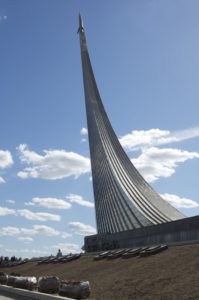 In 2015, we spent a couple of weeks in Western Russia, including some spectacular days in Moscow. As a space-nut, there was no way I was going to miss a trip to the Memorial Museum to Cosmonauts. We braved a 3-line trip through Moscow's subways (which are incredibly clean and efficient, by the way), and were confronted by this huge memorial. The museum is underground, beneath it.
In 2015, we spent a couple of weeks in Western Russia, including some spectacular days in Moscow. As a space-nut, there was no way I was going to miss a trip to the Memorial Museum to Cosmonauts. We braved a 3-line trip through Moscow's subways (which are incredibly clean and efficient, by the way), and were confronted by this huge memorial. The museum is underground, beneath it.
There were no English speaking guides, and though some of the exhibit signs were in English, most were not, and it took all my space knowledge to piece together what we were looking at.
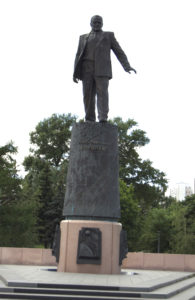
Outside the museum is an avenue of statues and busts of famous space pioneers and cosmonauts. Standing at the entrance was this fellow, Sergei Korolev, regarded by many as the father of astronautics. He worked as the lead rocket engineer and designer for the Soviets during the Space Race in the 1950's and 1960's.
Below are Strelka and Belka. They were launched into orbit on 19th August 1960 aboard Korabl-Sputnik 2 sat atop a Vostok-L carrier rocket. The two dogs were accompanied by some mice, rats and plants. They were recovered safely and in 1961, when Strelka had a litter of puppies, one was sent to Jacqueline Kennedy as a goodwill present.
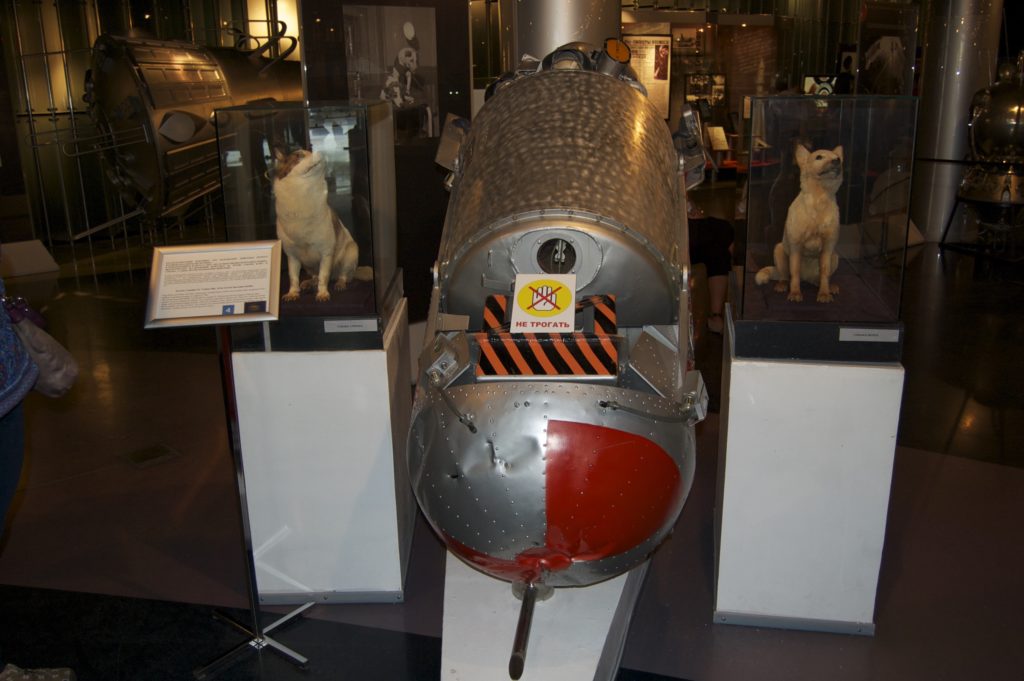
Talking of Sputnik, below is a breakaway model of Sputnik 1. Sputnik 1 is of course famous as the first spacecraft to leave Earth's atmosphere on 4th October 1957. Each orbit took 96 minutes, during which everyone on Earth could listen to the beep-beep of its radio transmitter. After 21 days it fell silent, its battery exhausted. Sputnik 1 itself spent 3 months in orbit before burning up in the atmopshere.
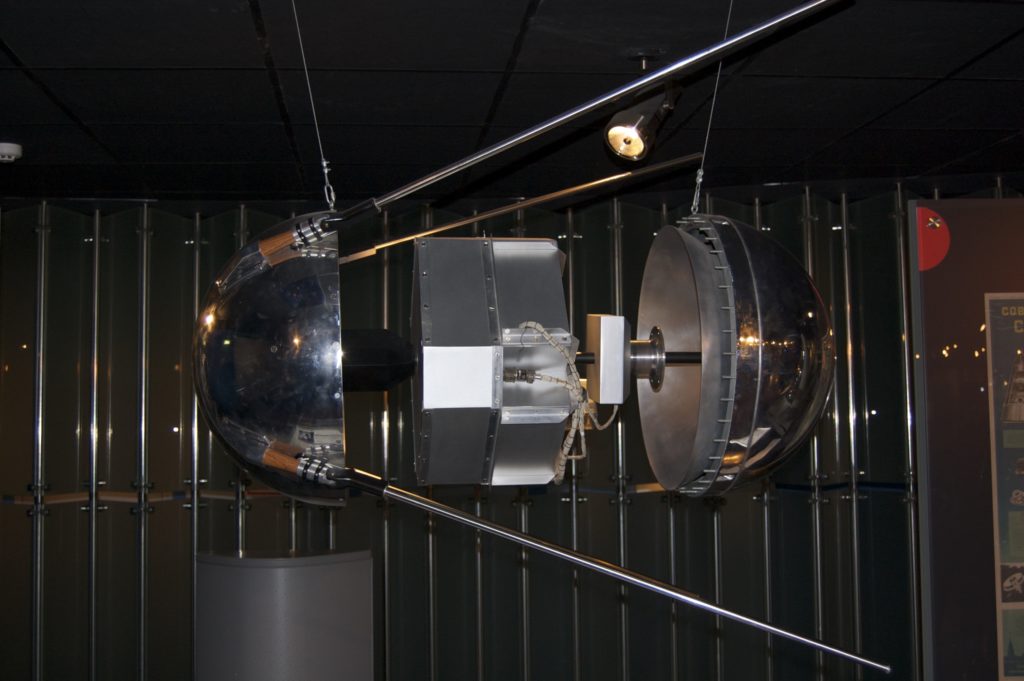
Below is a Vostok capsule. This one is probably the Vostok 3KA used to carry a single dog into orbit. In a larger size, the Vostok capsules would go on to carry the first man into space in 1961, Yuri Gagarin. As you can see, this one is pretty small – I'm almost fatter than it is!
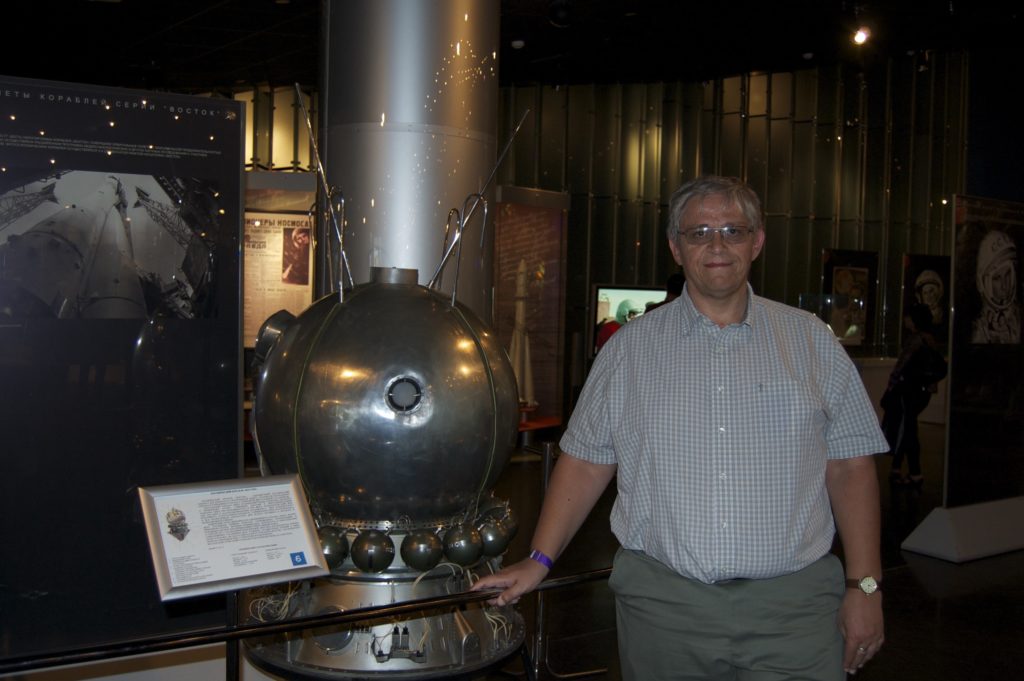
Below is Venera 9, one of my all time favourite unmanned space missions. The Venera series orbited and dispatched landers through the impenetrable Venusian atmosphere to the horrendously hot surface of Venus. This exhibit is shown without the huge solar panels and communications dish. Venera 9 entered Venus orbit on October 20th 1975. That egg shaped bulge at the left end is the lander and descent module. Though other Venera probes had landed successfully on the surface of Venus, Venera 9 was the first probe to return images from the surface of another planet. It lasted only 53 minutes before succumbing to the intense heat and pressure.
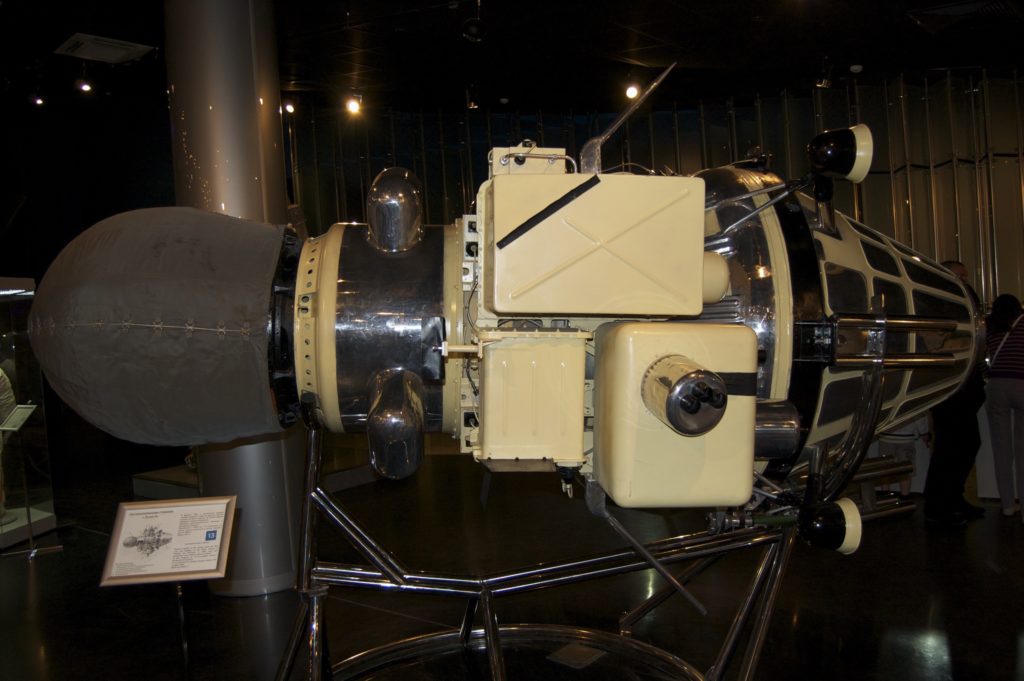
Below is Zond. This series of planetary probes were launched by the Soviets between 1964 and 1970. Zond 1 flew by Venus, Zond 2 went to Mars, but then the remainder of the series, up to Zond 8, were repurposed to study the Moon for the Soviet moon program.
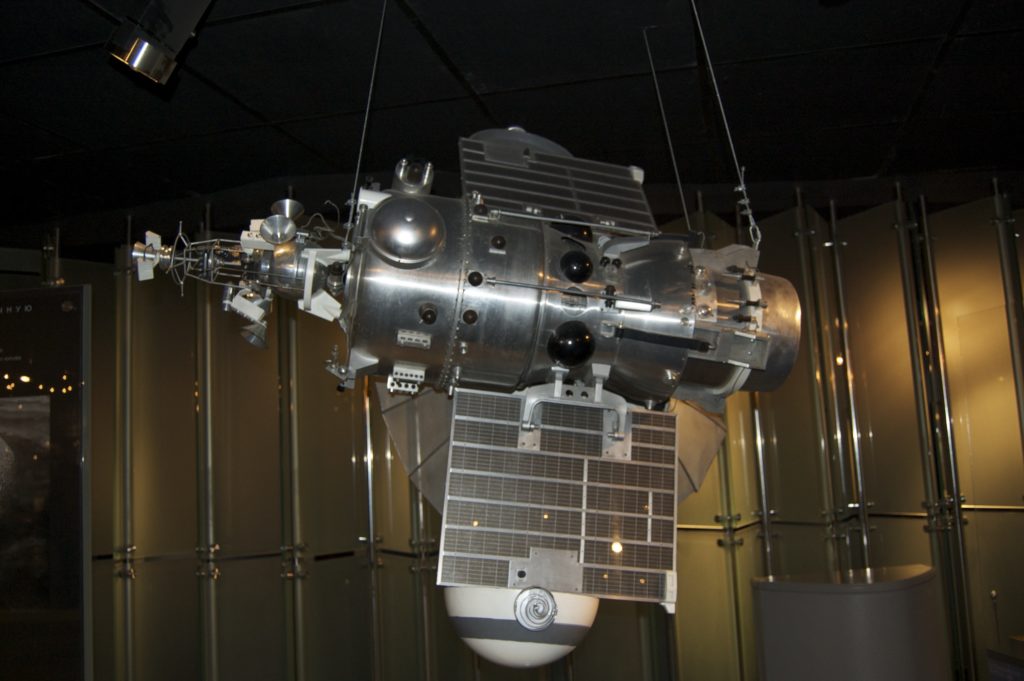
Everyone know what this famous space station is? MIR. A series of 7 modules launched and joined in orbit. MIR had an operational life from 1986 to 2001, during which astronauts from several nations (including the USA) spent time there with the Russian cosmonauts.

And below is a life size replica of the MIR Core Module, the first component to be launched in 1986. It contained living quarters and a spherical airlock/docking port, onto which the later modules were attached. It was fun to walk about on this and see just how cramped it was.
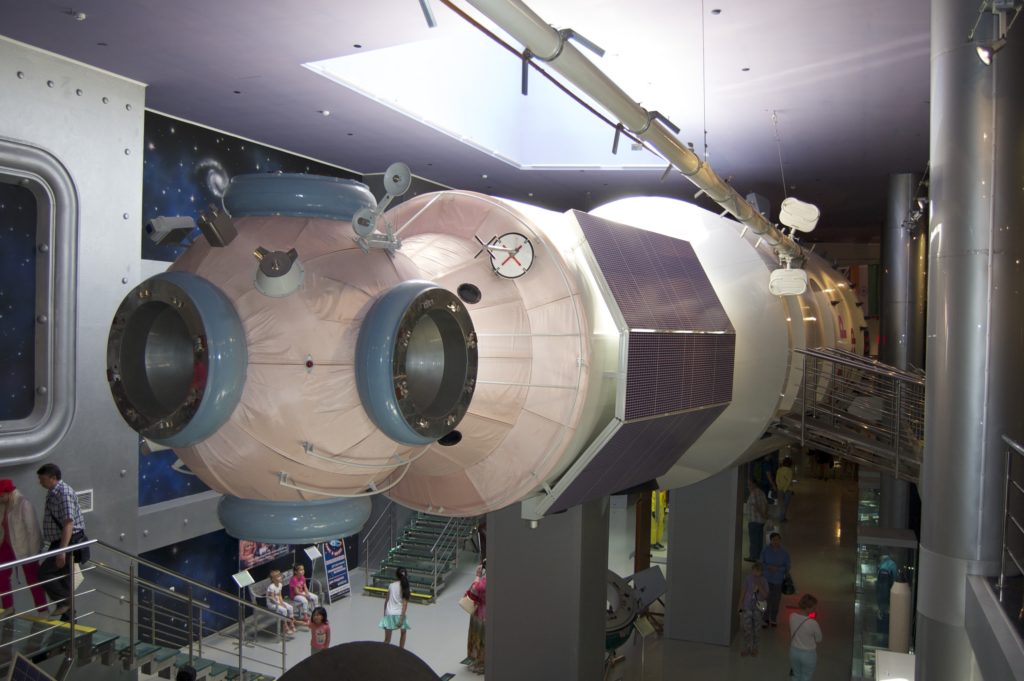
Below is Luna 17. It landed in the Sea of Rains on the Moon on 17th November 1970. As well as collecting and analyzing soil samples, it deployed the first robotic rover, Lunokhod 1.
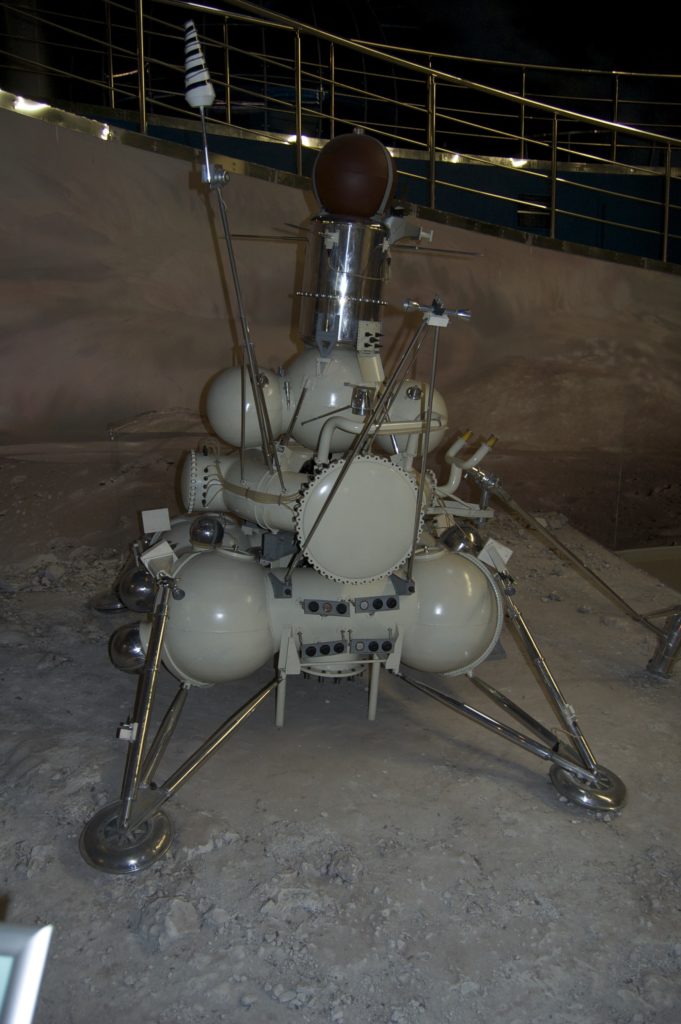
And here is Lunokhod, and it's completely massive! I guess the Luna 17 lander was considerably larger than it looks. Lunokhod 1 survived for almost a year and travelled 10.5 km across the Lunar surface. Lunokhod 2 travelled 35km near the edge of the Sea of Serenity.
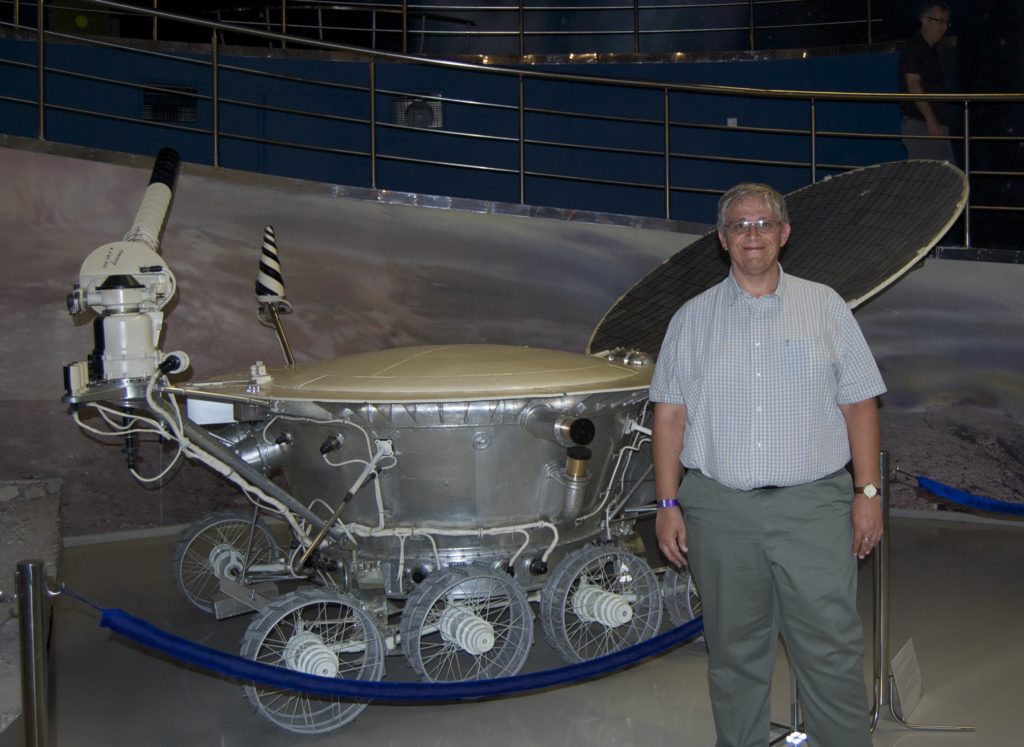
A couple more pictures: First an inside view of the cramped Soyuz capsule, the mainstay of the Russian space program and still used to ferry astronauts between Earth and the ISS.

And a mockup of a Russian lunar lander.
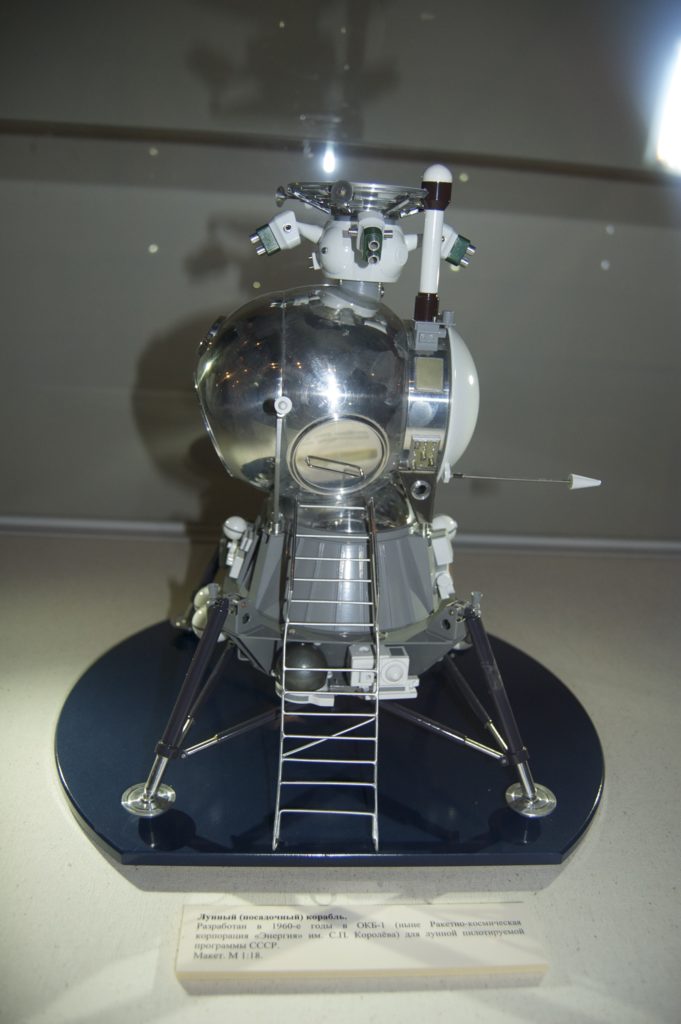


 In 2015, we spent a couple of weeks in Western Russia, including some spectacular days in Moscow. As a space-nut, there was no way I was going to miss a trip to the Memorial Museum to Cosmonauts. We braved a 3-line trip through Moscow's subways (which are incredibly clean and efficient, by the way), and were confronted by this huge memorial. The museum is underground, beneath it.
In 2015, we spent a couple of weeks in Western Russia, including some spectacular days in Moscow. As a space-nut, there was no way I was going to miss a trip to the Memorial Museum to Cosmonauts. We braved a 3-line trip through Moscow's subways (which are incredibly clean and efficient, by the way), and were confronted by this huge memorial. The museum is underground, beneath it.










